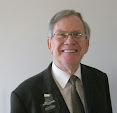Winter Widows, Mining, and Vigilantes
Money was hard to come by in those early days. Farming was mostly on a subsistence level. Most laborers earned only $1.00 per day. In the 1860s and 1870s some of the Buchanan and Watson men found a more lucrative source of income. The mines in Nevada were looking for miners and would pay as much as $3.50 per day. After the crops were harvested, the men would leave their farms in the charge of their wives and children, and make the 11-day journey by train and horseback to Nevada. The wives left behind to work the farms were jokingly called "winter widows". It was a hardship on the whole family, but it was judged as the best way of getting ahead financially. I don't have a definitive list of who went to Nevada, but the list is known to include Samuel and John Buchanan, and David and James Watson.
When I was first told that “they were gold miners in Nevada” I thought of solitary men with floppy hats panning gold along a mountain stream. I soon came to realize that this was completely wrong. Nevada mines were huge industrial complexes, deep underground with large crews and terrible heat!
The only place the family mined that I have heard mentioned specifically is Gold Hill, Nevada. Gold Hill was a mining town on the "Bonanza" Comstock Lode, just south of the more famous Virginia City. Today little remains of Gold Hill. The following brief articles describe these towns.
GOLD HILL - Actually discovered before Virginia City and its size rivaled that town for a few years. By 1873, it had become a small city with a population of 8000. It had its own mines on this southern end of the Comstock Lode but after 1878, the mines declined and so did Gold Hill. By the turn of the century, less than 50 still lived here. The town has never been abandoned and the Gold Hill Hotel, the oldest in Nevada, is still in operation. Other buildings remain including the old V & T RR depot which is being restored and is used by the revived railroad which caters to tourists.
VIRGINIA CITY - Virginia City was the most famous of Nevada mining towns. Two words say it all: “Comstock Lode”. First discovered in 1859, the rest is history. The town's population ranged as high as 75,000 in 1875. Today, it continues to be a vibrant town although mining ceased many years ago. It is the premier tourist town in Nevada. It retains much of its early flavor.
The Mines
Most of the Comstock miners worked deep underground, under deplorable conditions. An estimated 600 mine shafts were tunneled to gain access to the rich silver and gold ore of the Comstock Lode before it was depleted in the1880s. The Nevada mines are said to have pumped a billion dollars into the American economy during their heyday. (This played an important role in financing the Union army during the American Civil War. In return, Nevada was allowed to become a state without having to meet the usual requirements.) If you translate that in terms of today's dollars, the amount of money is even more staggering. This was no small operation! Miners usually earned about $3.00 per day, very good money for the time.
Desperadoes and Vigilantes
The payrolls attracted predators of the worst sort. In several towns the only way the criminals were driven out of town was by vigilantes. At least some of the “vigilance committees” seem to have been organized by the fraternal lodges and the miners' unions. The name of the vigilante organization that cleaned up Reno is interesting "The 601". The one that drove the criminals out of Gold Hill is referred to as "Club 101" in family tradition. Perhaps the story that was passed down refers to Reno rather than Gold Hill, but all the vigilante stories are very similar. Mark Twain's articles while he worked for a Virginia City newspaper, the Territorial Enterprise (1862-1868), gave an interesting look at the times.
Club 101, as told by Samuel Buchanan
Some of the worst predators were a group of Australian outlaws called “bush rangers”. Whenever someone was killed and robbed, these men provided alibis for each other, making it impossible to bring them to justice. Finally a murder was seen by reliable witnesses, and again the gang provided witnesses who claimed that the murderer was in an all-night poker game with them and could not possibly be the guilty party. The miners realized that they had no legal protection and formed a vigilante group called Club 101. That night they lynched all the gang members they could find. It was a gruesome story, with bodies hanging from trees, store signs, and other convenient locations. Club 101 also left notes warning any remaining gang members to be out of town by sunset or face the same fate. By noon all gang members had left town.
There is no indication that any family members were involved, but it was news that was long remembered.


0 Comments:
Post a Comment
<< Home